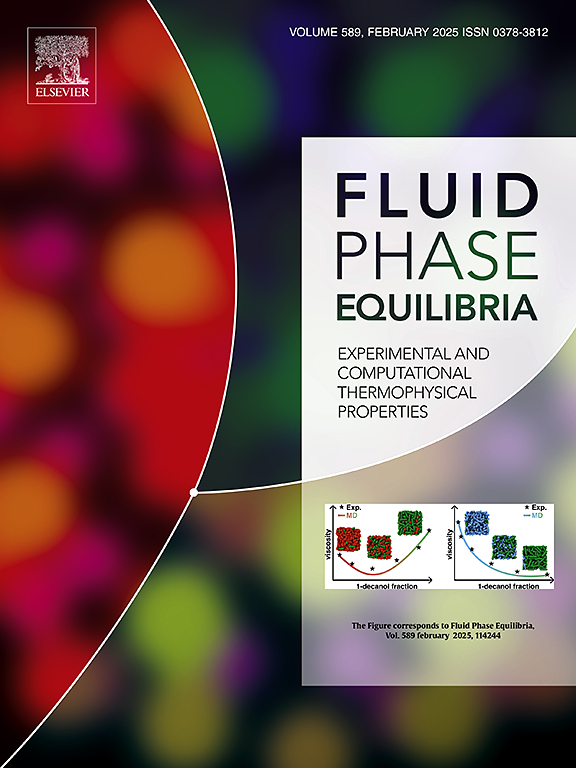Studying the influence of temperature on the thermodynamic, structural, and dynamic properties of 11 recently reparametrized rigid water models via molecular dynamics simulations
IF 2.8
3区 工程技术
Q3 CHEMISTRY, PHYSICAL
引用次数: 0
Abstract
Molecular dynamics simulations were conducted to investigate 11 recently reparametrized 3-site, 4-site, and 5-site rigid water models, including TIP4P/ε, OPC, TIP3P-FB, TIP4P-FB, TIP4P-D, SPC/ε, OPC3, TIP5P-2018, TIP3P-ST, TIP4P-ST, and FBA/ε. The study focused on the effects of temperature on the thermodynamic, structural, and dynamic properties of water. A wide range of physical properties was examined using both slab and closed systems across temperatures ranging from 270 to 630 Kelvin. The results were compared with older rigid and non-rigid water models. Among the models tested, TIP4P-FB demonstrated the best overall performance, while OPC3 was identified as the most accurate among the 3-site models tested in this study.
通过分子动力学模拟研究了温度对11种最近重新参数化的刚性水模型的热力学、结构和动力学性质的影响
分子动力学模拟研究了11个最近重新参数化的3点、4点和5点刚性水模型,包括TIP4P/ε、OPC、TIP3P-FB、TIP3P-FB、TIP4P- d、SPC/ε、OPC3、TIP5P-2018、TIP3P-ST、TIP4P- st和FBA/ε。研究了温度对水的热力学、结构和动力学性质的影响。在270到630开尔文的温度范围内,使用板状和封闭系统检查了广泛的物理性质。结果与旧的刚性和非刚性水模型进行了比较。在测试的模型中,TIP4P-FB表现出最佳的综合性能,而OPC3在本研究测试的3个位点模型中被认为是最准确的。
本文章由计算机程序翻译,如有差异,请以英文原文为准。
求助全文
约1分钟内获得全文
求助全文
来源期刊

Fluid Phase Equilibria
工程技术-工程:化工
CiteScore
5.30
自引率
15.40%
发文量
223
审稿时长
53 days
期刊介绍:
Fluid Phase Equilibria publishes high-quality papers dealing with experimental, theoretical, and applied research related to equilibrium and transport properties of fluids, solids, and interfaces. Subjects of interest include physical/phase and chemical equilibria; equilibrium and nonequilibrium thermophysical properties; fundamental thermodynamic relations; and stability. The systems central to the journal include pure substances and mixtures of organic and inorganic materials, including polymers, biochemicals, and surfactants with sufficient characterization of composition and purity for the results to be reproduced. Alloys are of interest only when thermodynamic studies are included, purely material studies will not be considered. In all cases, authors are expected to provide physical or chemical interpretations of the results.
Experimental research can include measurements under all conditions of temperature, pressure, and composition, including critical and supercritical. Measurements are to be associated with systems and conditions of fundamental or applied interest, and may not be only a collection of routine data, such as physical property or solubility measurements at limited pressures and temperatures close to ambient, or surfactant studies focussed strictly on micellisation or micelle structure. Papers reporting common data must be accompanied by new physical insights and/or contemporary or new theory or techniques.
 求助内容:
求助内容: 应助结果提醒方式:
应助结果提醒方式:


